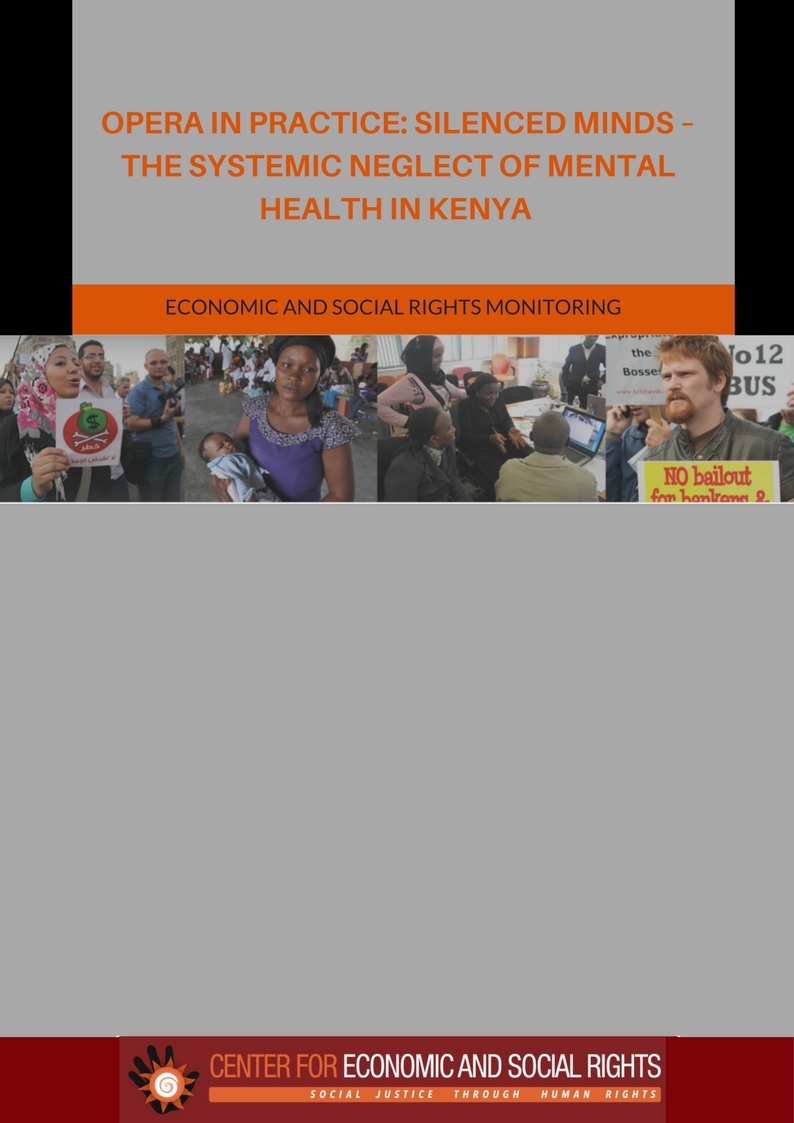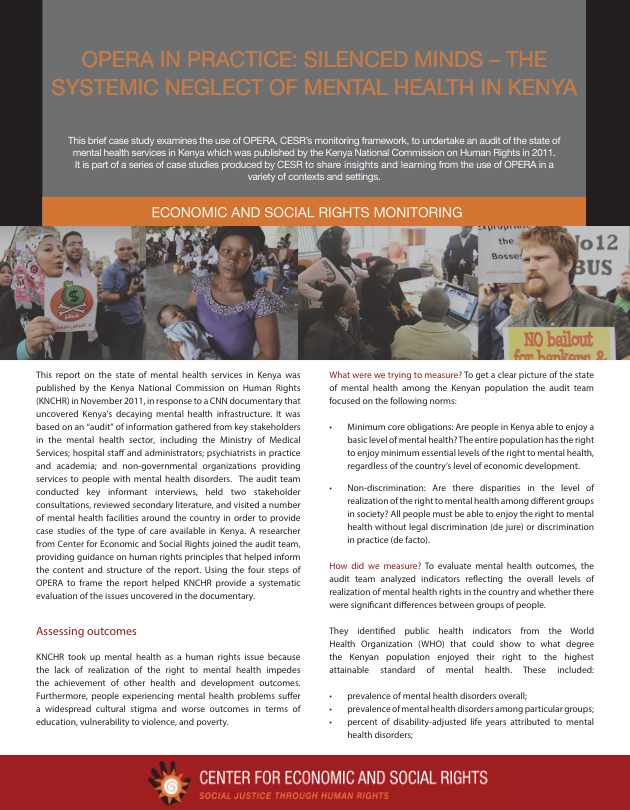This case study in PDF format can be downloaded here.
This brief case study examines the use of OPERA, CESR’s monitoring framework, to undertake an audit of the state of mental health services in Kenya, which was then published by the Kenya National Commission on Human Rights in 2011. It is part of a series of case studies produced by CESR to share insights and learning from the use of OPERA in a variety of contexts and settings.
In 2011, The Kenya National Commission on Human Rights (KNCHR) published a report on the state of mental health services in the country, in response to a CNN documentary uncovering Kenya’s decaying mental health infrastructure. The report was based on an “audit” of information gathered from key stakeholders in the mental health sector, including the Ministry of Medical services; hospital staff and administrators; psychiatrists; and nongovernmental organizations providing services to people with mental health disorders. A researcher from CESR joined the audit team to provide guidance on human rights principles which helped inform the content and structure of the report. Using the four steps of OPERA to frame the report helped the KNCHR provide a systematic evaluation of the issues uncovered in the documentary.
To get a clear picture of outcomes and the state of mental health among people living in Kenya, the audit team focused on the human rights norms of “minimum core obligations” and “non-discrimination”. This allowed those conducting the audit to get a better idea of if the right to health was equally accessible to all people in Kenya, regardless of the country’s economic development or the individuals’ ascribed traits or status. The team then created a set of indicators based off available data from the World Health Organization (WHO), government ministries and academic research in order to analyze overall levels of mental health rights realization in the country and where there were significant differences between groups of people. The data was then measured against relevant human rights standards and national goals to determine overall levels of realization in the country. There was a serious lack of relevant data available specifically for Kenya. Nonetheless, the audit team was able to source some data on each indicator, often relying on global estimates and calculating what these equated to in Kenya.
The audit team's research revealed that Kenya faced significant issues with regard to the realization of the right to mental health, including treatment accessibility, educating mental health workers and diagnosis of mental health disorders. Data analysis, along with consultations with psychiatrists, indicated that approximately 10% of the general adult population and 20% of patients seeking primary care presented symptoms of some mental health disorder at any one time. However, the formal rates of detection were at 4.1%. The audit team’s overall research found that an estimated 8.5 million people in Kenya were not receiving the care they needed. The research also found that despite Kenya being a party to numerous treaties securing the right to mental health, the country lacked any concrete legislation or programming to realize this right.
The KNCHR’s report ended with a set of recommendations to the government on fulfilling its obligations to respect, protect and fulfill the right to mental health. Following the publication of the report, Kenya’s National Assembly introduced a number of mental health bills designed to improve the care and treatment of mental health patients. However, no bill has been passed and the people of Kenya still struggle to fulfill their right to mental health.
The major challenge in conducting the audit was the lack of readily accessible, reliable, public data, which meant that much of the analysis was based on broad estimates, limited primary data collection and opinion gathering. Nevertheless, the lack of adequate data was an important finding in and of itself and the report made concrete recommendations in this regard. The audit report provides an interesting example of how OPERA can be used in a less “quantitative” way, but can still provide value in structuring a diverse range of concerns raised by stakeholders in a coherent way to demonstrate non-compliance with human rights norms.

